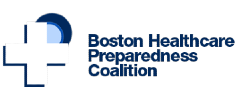Stephen M. Lawlor Medical Intelligence Center
In response to an event or incident that requires the coordination of public health and medical services, the Stephen M. Lawlor Medical Intelligence Center serves as the Public Health and Healthcare Coordination Center in the City of Boston. In this role, the MIC serves as the HPC’s primary conduit for situational awareness and information sharing, and the coordination of resources and human services during and following emergencies that affect public health and healthcare.
The MIC supports Boston healthcare organizations through the 24/7/365 on-call MIC Duty Officer, which allows the coalition constant access to the MIC and its coordination functions. This Duty Officer, which is composed of a roster of designated OPHP staff, monitors the MIC email and answers the MIC phone line in order to be available for any Boston HPC member request and/or provide initial situational awareness for an unfolding incident.
Contact the MIC Duty Officer 24/7/365: mic@bphc.org
When an incident or event requires assistance beyond the capacity of the MIC Duty Officer, the MIC’s scalable infrastructure enables it to operate at various activation levels. The level of impact or cascading effects of an emergency will determine the MIC activation level required for the anticipated need for information sharing and/or the coordination of medical/healthcare/human services resources.
A brief overview of the MIC can be found here.
MIC Activation Levels and Description
Description: Day-to-day operations performed by the MIC Duty Officer that includes both the passive and active monitoring of events that have the potential to impact public health and healthcare.
Examples: Suspicious packages; motor vehicle accidents; fires w/no reported injuries.
Description: An event has occurred or is anticipated to occur that has or will have the potential to significantly impact public health and/or healthcare.
Examples: Severe weather watch/warning; Haz-Mat spill; critical facility infrastructure damage/closure; hospital code black; large public gatherings.
Description: An event has occurred or is anticipated to occur that will require physical MIC staffing to support the increased coordination amongst ESF-8 partners as a result of an actual or possible impact.
Examples: Winter storms/blizzards; Mass Casualty Incidents with 31 or more patients (MCI Level III or higher); annual July 4th celebrations; Long-Term Care facility evacuation, 2010 Weston Water Main Break.
Description: An event has occurred that requires support external from BPHC to assist in increased coordination amongst ESF-8 partners as a result of public health and healthcare impacts.
Examples: Loss of operations at an essential public health or healthcare facility; hospital/large healthcare facility evacuation; annual Boston Marathon; large disease outbreak; bioterrorism event; 2013 Boston Marathon Bombing.
Each MIC activation level corresponds to either a virtual or physical activation of the MIC, as determined by the operations required to support healthcare partners. Additionally, activation levels can increase or decrease throughout the timeline of an incident depending on the severity and complexity, and timeline of an incident. A full description of each MIC activation level and corresponding MIC actions can be found in the MIC Concept of Operations document.



